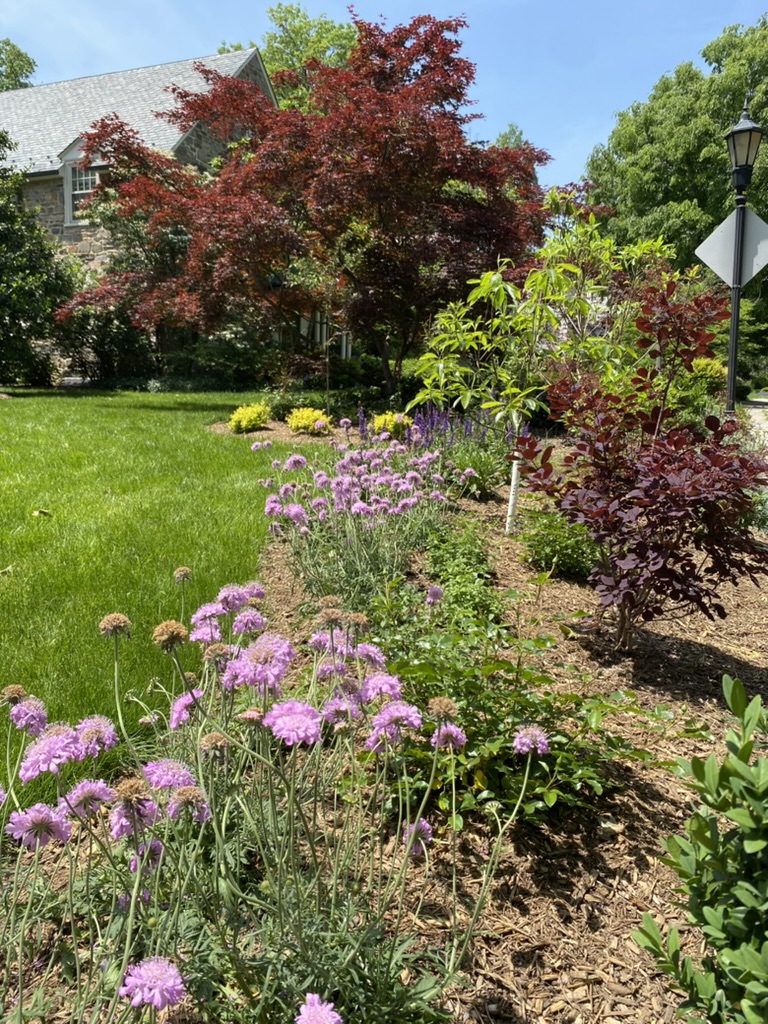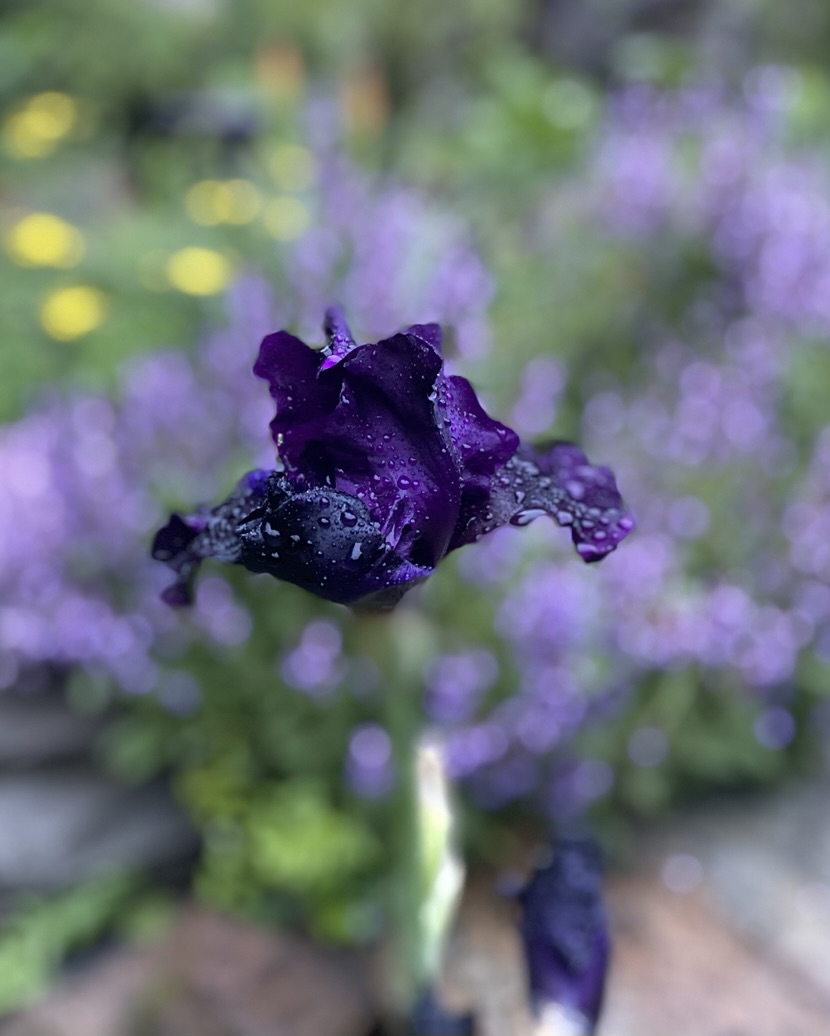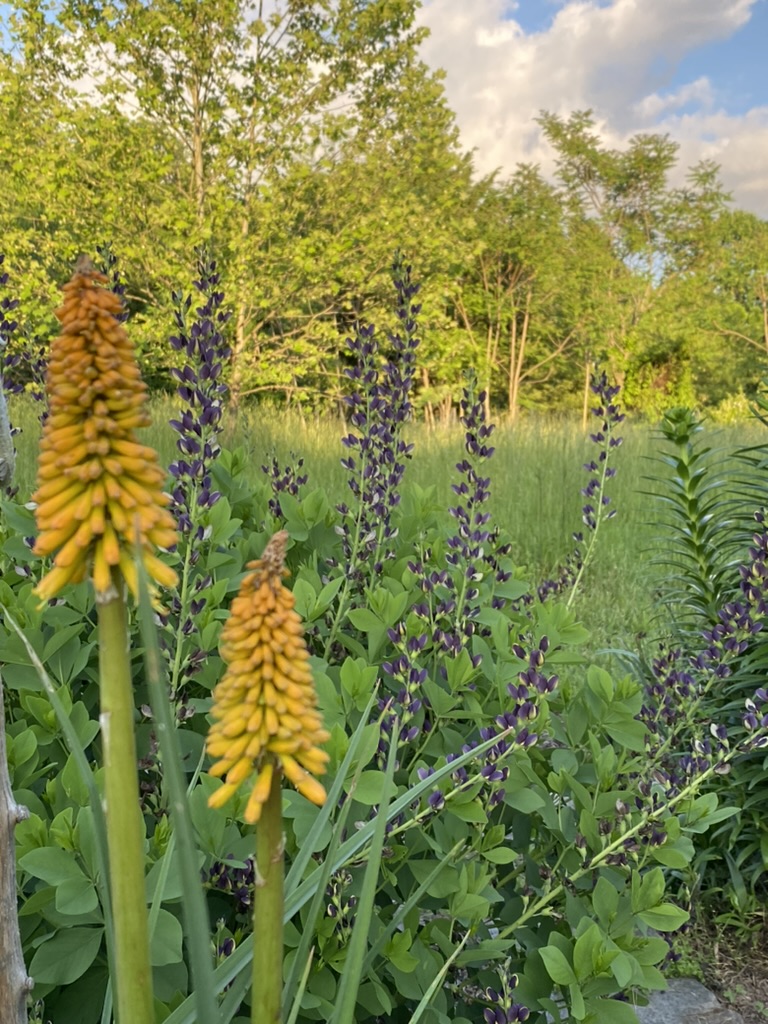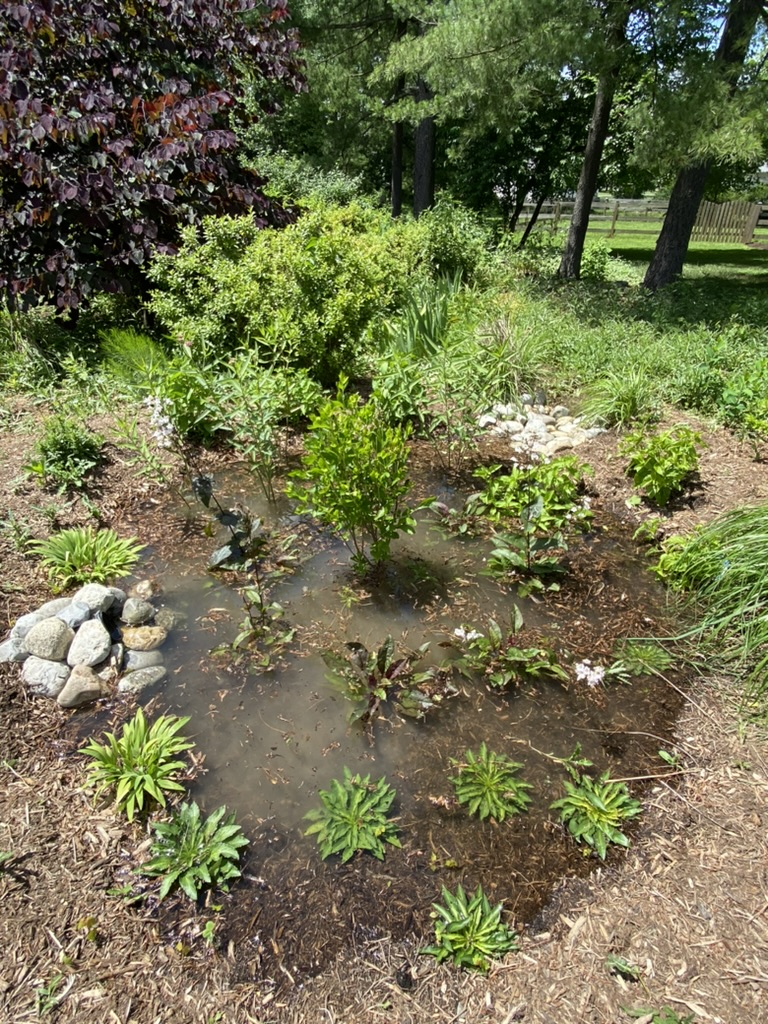Design Philosophy
Our design philosophy combines ecology, beauty and abundance to create gardens which
function as a habitat for us as humans as well as for the greater world of biological life around
us. Whether a garden is functioning as an expansive orchard or as a small pocket garden in a
dense urban setting, it must be beautiful and connect us to nature.
In our 20 plus years of garden design and installation experience, we have seen a shift in
landscaping trends to embrace gardens which support wildlife, be that our precious pollinators,
birds, or small mammals. Our understanding of the life within the soil has exploded and we now
understand that plant health depends on soil health, which depends on a healthy soil
ecosystem. Water management has become ever more critical as we face the changes to our
water cycle induced by climate change as well as increasing areas of impervious surfaces as
we continue to expand our built environment. Increasingly we must find ways to absorb our
storm water into our landscapes. Designing with native plants and an expansion of native plant
cultivars has transformed our gardens with plants that are more adapted and resilient than many
of the imports that graced our gardens over the past century. However, at the same time our
access to a global array of plants increases our design scope considerably.
After over 200 years of industrial expansion and the availability of chemical garden
amendments, we have reached a point where we are shifting away from high maintenance, high
input and human centric garden design towards low maintenance, low input, design geared
towards the harmonizing of human cultural needs and ecological health with the biodiversity and
abundance of life.
Our design objectives include the following principles:
Lower Inputs by restoring soil life and biodiversity, appropriate plant selection. This allows us
to lower fertilizer inputs and avoid the herbicides and pesticides which are wreaking havoc on
our ecosystem.
Reduce Maintenance through appropriate plant selection, increase density of planting to
reduce weed pressure and mulching, reduction of pruning through appropriate tree and shrub
selection. Creating access paths that make functional sense is part of this principle. Possibilities
such as on site composting of garden waste can increase our ease of maintenance when the
space allows it. This ties into the principle of cycling nutrients on site rather than contributing to
a waste stream. In small gardens this may be impossible and composting of waste will need to
occur elsewhere.
Design Water Flow through use of dry river beds, rain gardens, ponds, and swales using the
principle of slowing and sinking water on site to reduce pressure on the storm water system and
to reduce erosion. These water features can become ecological niches that bring a diversity of
life to our gardens.
Work with Existing Conditions through plant selection for the soil conditions that are already
present. Low fertility soils can actually support a greater diversity of plants than high fertility
soils, therefore we can design without amending the soil in many cases when designing
naturalistic planting. Rather than expensive drainage systems, we design gardens to take
advantage of wet areas. Rather than depending on irrigation, we design for dry areas with
drought tolerant plants and plants that prefer highly drained soil.
Zoning allows us to create areas of the garden for higher and lower intensity of maintenance.
Gardens close to the home can be naturally more intensive, those further afield can be
simplified, such as a woodland or meadow vista. Even in smaller gardens this principle can be
applied.
Abundance is an important principle, whether that abundance is a healthy fig harvest on a
single fig tree, a patch of blueberries (a fine ornamental and edible) a coppiced woodland for
fuel or an abundance of flowers for our enjoyment. Having a “harvest” to collect can provide
wonderful focal points to a season and bring us value.
Vistas and the inclusion of them into our garden designs is a tradition going back hundreds of
years. The view out of the garden is just as essential as views within. There are views we
design to block (such as the neighbor’s trash cans) and those we design to bring into the garden
such as the beautiful architecture of a nearby building, the sweeping view of a hillside, distant
mountains, or a magnificent forest. Placing seating at vista points encourages us to enjoy these
special garden views.
Color and Texture creates mood. In gardens color and texture changes dramatically over the
course of the year, especially in temperate climates. To avoid a dull season, color and texture
are carefully selected to create mood and movement.
Embrace Change since the garden is never stagnant. Many commercial designs are short term
with the assumption that every 10 years the existing vegetation will be torn out and all new
plants will be brought in. A garden designer is a time traveller in the sense that we need to be
able to envision the growth of the various plants and how they will impact each other over time.
Ultimately this radically reduces both maintenance and inputs. Trees and shrubs in particular
need to be carefully selected with an understanding of their ultimate size. Herbaceous
perennials will change as the larger plants create shade. All this is considered in our designs.
Garden in Harmony with the Earth as although we may have a design and implement it
perfectly, there will always be unexpected outcomes as we are designing living systems. New
plants may appear, conditions may change, the neighbor’s huge tree may be cut down, our
needs may shift, or plants that on paper should thrive, simply don’t. The garden is a living entity
that will bring us unexpected surprises and make suggestions of its own. Our interventions
should be carefully considered.
Limitations actually enhance the ultimate design as they require us to put greater thought into
the design. Limitations can include site conditions, space, budget, HOA requirements, existing
structures or trees, access, water availability, and shade. We rarely are starting out with ideal
conditions but we can still design wonderful gardens.
Celebrate Nature by designing for an immersive experience of nature in our gardens. In our
increasingly urban environments, immersive experience of nature becomes increasingly
important whether that be in our public spaces or private gardens. It is also becoming
increasingly important to bring pollinators, birds, and other life forms into our gardens to support
these essential organisms by consciously creating habitat for them. Our gardens can be a
refuge not just for us but for many valuable macro and micro organisms.
Beauty is a requirement. Our gardens must be beautiful to reach their potential and to truly be a
space that brings us happiness and vitality. Beauty is indeed in the eye of the beholder but there
are basic principles of design which most of us consider beautiful, many of which can be traced
back thousands of years in our evolution of gardens. Bringing together principles of beautiful
gardens with one’s personal sense of beauty is essential for a design to work for us as
individuals. Our own aesthetic preference as well as a need to link our home and garden
together aesthetically cannot be overemphasized. Our garden needs to be beautiful to us
whether that is a rich diversity of color and texture of plants spilling out from every side or
serene mass plantings with one carefully chosen tree. Our garden is our habitat and must reflect
us deeply as well as be a thriving ecosystem niche.
We are now well into the 21st century with its changing demands and conditions. Our design
philosophy faces towards a world in which our evolving understanding of our earth, the
ecosystem, pollution, climate change, and energy use, demands an evolution in our gardens.
Advanced global mapping has completely transformed our design processes as has our access
to information and plants. We have new limitations and new technologies. We have an
abundance of new cultivars of native plants, ornamentals, and productive plants. We are
creating completely novel ecosystems in our gardens, pairing native and exotic plants to find
new harmonious pairings. With our growing awareness of the importance of the ecosystems we
live in as well as the great ecosystems of the world, we are moving away from the tightly
controlled gardens of the past and turning towards gardens that more clearly reflect the
ecological principles of life on earth but which have a distinctly human touch.






